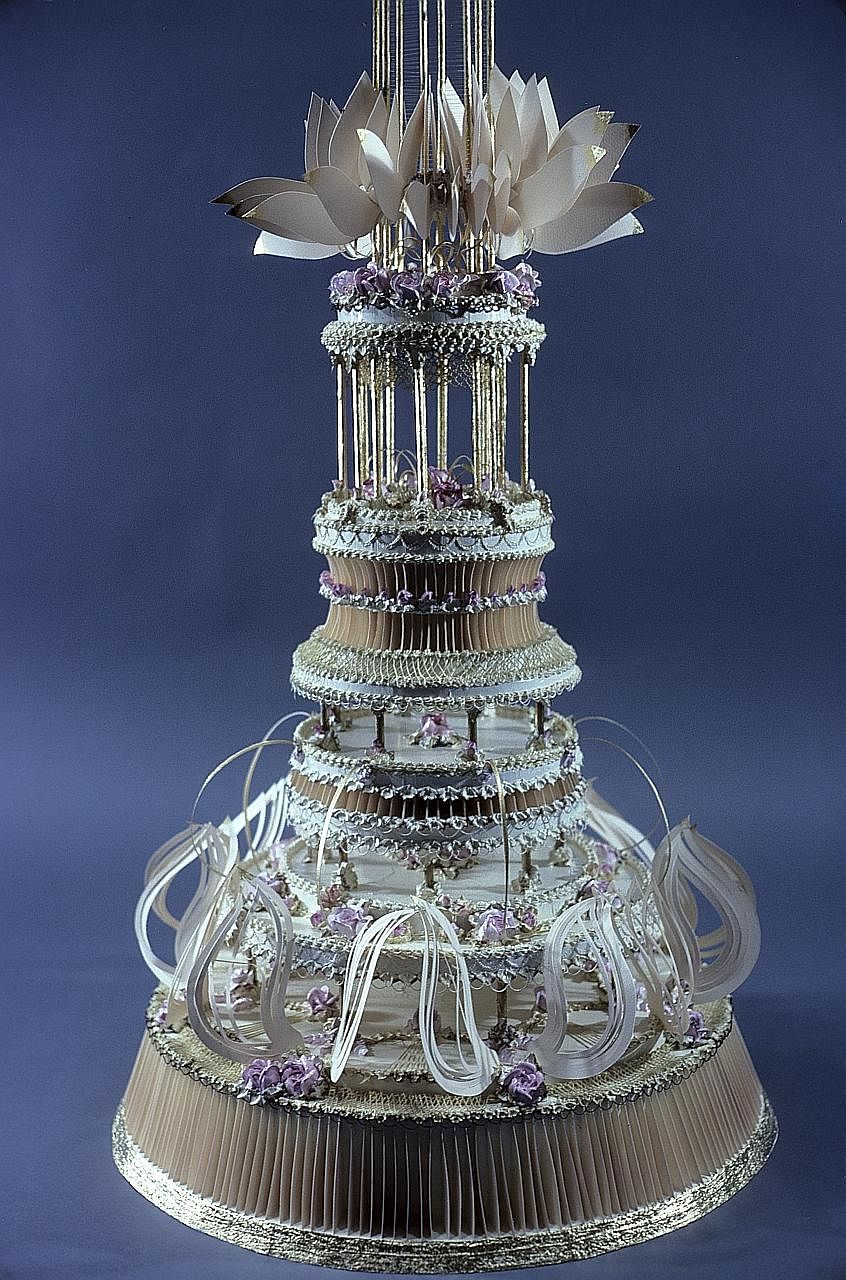NEW YORK • New York sculptor Pat Lasch has spent her career making works that play with the distinction between ordinary things and things belonging in museums: realistic-looking ballgowns made from dried acrylic paint; plaster eggs; and towering decorative cakes fashioned from wood and paper.
Her fascination with cakes grew out of a notion of them as markers of time's passage, through birthdays, weddings and other occasions. Cakes have also helped her remember her father, a Germany-born pastry chef who gave her some life advice when she worked in his bakery as a teenager, piping the icing: "If you make a mistake, put a rose on it."
Recently, Lasch, 72, discovered a mistake that even the loveliest rose is unlikely to fix: The Museum of Modern Art (MoMA), which commissioned a 157cm-tall cake sculpture in 1979 as part of its 50th anniversary, appears to have discarded the piece, which she wanted to borrow for a retrospective of her work opening in March at the Palm Springs Art Museum in California.
Lasch, a first-generation feminist who started working in the early 1970s, said she contacted MoMA last autumn after the curator in Palm Springs, Ms Mara Gladstone, was unable to find records of the cake sculpture in the archives at MoMA. "Mara said, 'Pat, I don't know how to tell you this'," Lasch recalled in a recent interview.

Lasch, who has another work, a paper wedding veil from 1978-79, in MoMA's collection, said she had trouble getting museum officials to respond to her queries. Then last autumn, she received an e-mail from MoMA's head registrar, Ms Stefanii Ruta Atkins, which said: "I regret to inform you that, following a thorough review of paper records and a physical search of our storage locations, we have not been able to locate the object."
Ms Ruta added: "Please accept my sincere apologies as well as my very best wishes for the success of your show in Palm Springs."
MoMA has a sterling reputation as a protector of art, art books and hundreds of thousands of documents relating to its collection. Officials at the museum said records showed that the sculpture had never been accessioned into the permanent collection. But it remains unclear why the piece was not returned to Lasch if the museum intended it only to be displayed during the anniversary celebration.
In a statement last Friday, the museum said: "The Museum of Modern Art commissioned this object as a decorative element for its 50thanniversary celebration. While it was not intended for the collection or future display at the Museum, it was kept in our storage facilities for many years. Our recent research indicates that by the late 1990s, it had deteriorated beyond repair and was subsequently discarded."
Attempts to reach Mr Kynaston McShine, a prominent curator at the time who commissioned the piece, were unsuccessful.
Lasch has not had a prominent commercial career, although her work has been critically lauded and included in collections like that of the Metropolitan Museum of Art. She considered the 1979 sculpture an important early work and found it hard to believe that it had not been safeguarded.
"I've just presumed for the last 30something years that the piece was safe and sound because it's the Modern," she said. "How can you lose something that's 5-feet-2-inches tall? It's like losing my mother."
She said she believed her relatively low profile in the art world might have contributed to a lack of consideration for the piece after it was commissioned by Mr McShine.
Another factor, she said, could have been that female artists - particularly those like herself, making pieces perceived as decorative or domestic - struggled mightily in those years for recognition by MoMA, which has recently been playing historical catch-up, as have many museums, focusing intently on art by women.
"Yes, my art sometimes looks like food," Lasch said. "But I wonder if they'd ever let a Claes Oldenburg hamburger or pie sculpture go missing. I highly doubt it."
NYTIMES
